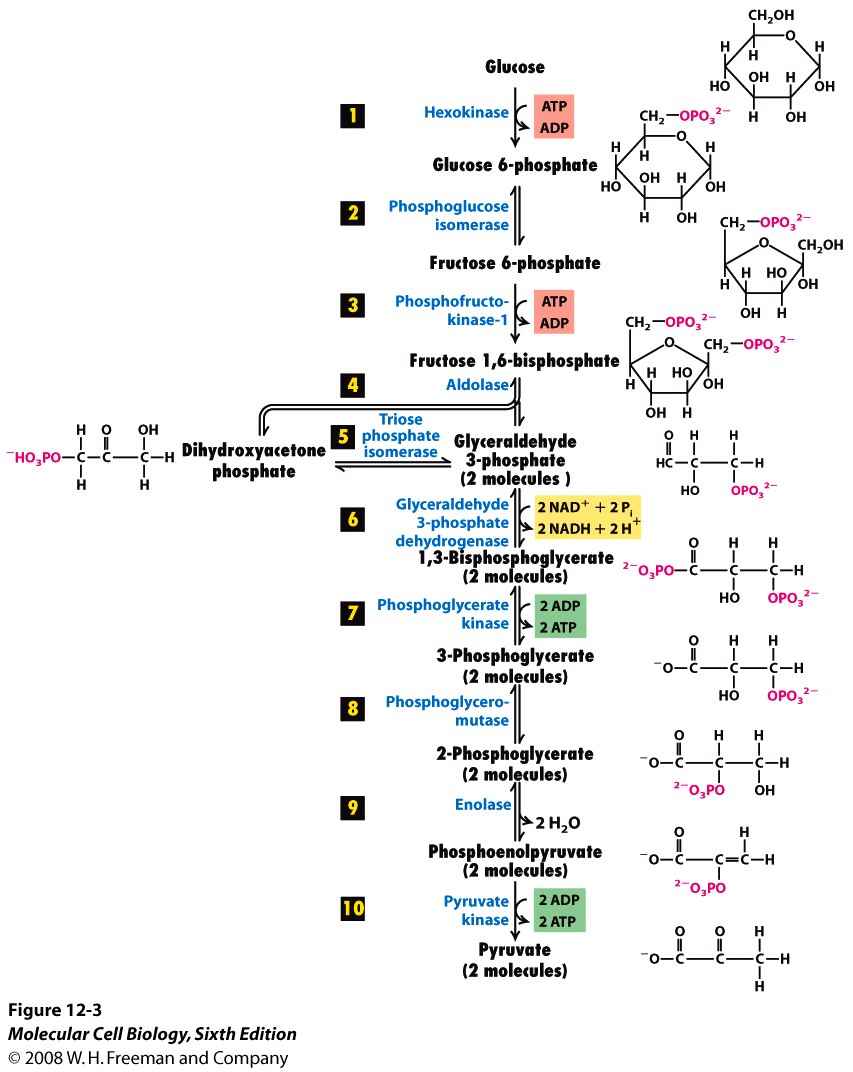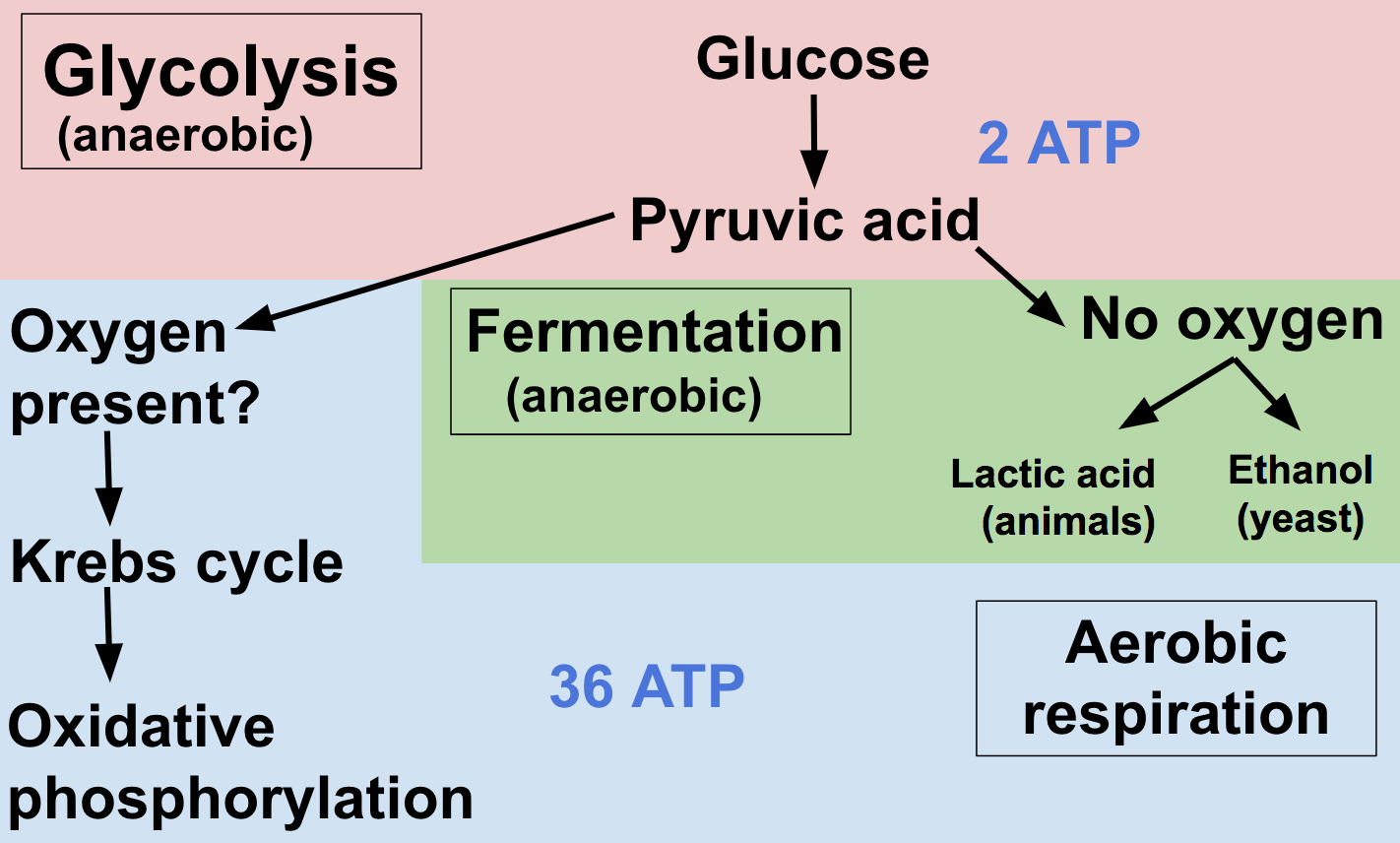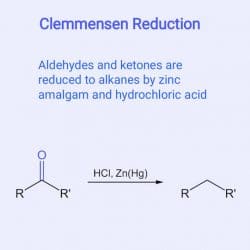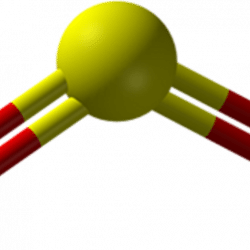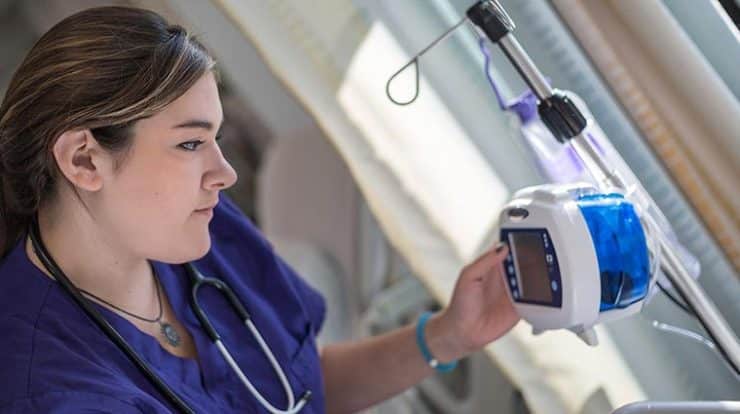All organisms, containing plants, get the energy necessary to survive from the process of respiration. The living cells respire the glucose in them. This produces some energy. Later, it produces carbon dioxide and water as by-products.
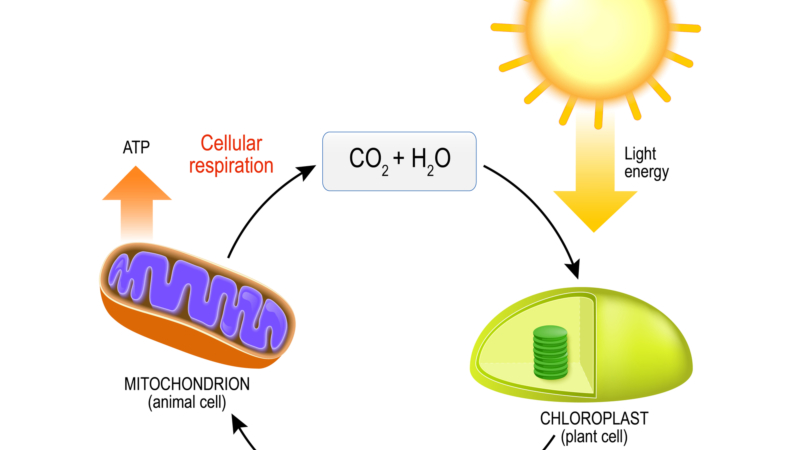
Respiration is the primary process in living organisms that produces energy. In the case of plants, the process of photosynthesis produces a substrate that can be broken down into energy. While in animals, the consumed food has many compounds that are digested into respirable substrates. The digestive system of organisms coordinates the digestion of complex foodstuffs. This process utilized multiple gastric enzymes. These substrates undergo respiration to release energy.
Respiration creates energy from compounds and releases it in the form of ATP. ATP is short for Adenosine Triphosphate. ATP is the energy currency of the cell. Adenosine Triphosphate consists of an Adenosine molecule bound to 3 phosphates connected by a phosphodiester bond. The body cells break down this ATP to release energy. ATP stores all the kinds of such energy within its bonds that are weak but high-energy.
The breakage of these bonds releases the energy required for vital activities of the body.
We define cellular respiration as an ensemble of metabolic reactions and processes that take place in the organisms to convert chemical energy from Oxygen molecules or nutrient substrates into Adenosine Triphosphate (ATP). This process also leads to the release of waste products.
The multiple reactions involved in respiration are catabolic in nature. This means that respiration breaks large molecules into smaller ones. Thereby releasing energy by breakage of weak high-energy bonds. Respiration is one of the prime ways a cell releases chemical energy to fuel the activity of the cells.
The overall reaction occurs in the order of biochemical steps. Some of these steps are redox. Although cellular respiration is technically an example of combustion, it does not resemble one.
During its occurrence in a living cell, because of the slow, controlled release of energy from the series of reactions, it is redox.
Aerobic And Anaerobic Respiration
Aerobic Respiration is the process of respiration that takes place in the presence of Oxygen gas to produce energy from food produced or consumed. Such kind of respiration is common in most plants and animals, birds, humans, and other mammals. Thereby occurring in almost all complex organisms. This process releases water and carbon dioxide as end products. The individual respires out the Carbon dioxide. Increased concentration of Carbon dioxide causes health hazards. Therefore, we need to excrete it out of the system.
Anaerobic Respiration is a process that takes place in the absence of Oxygen gas. During anaerobic respiration, we obtain the energy by the breakdown of glucose or any other suitable substrate. And organisms carry out such a process in the absence of Oxygen. For example, anaerobic respiration leading to fermentation in yeast.
Aerobic Respiration
Aerobic respiration is a biological process in which glucose produced or digested is converted into chemical energy in the presence of oxygen gas. The chemical equation of aerobic respiration is denoted below-
Glucose + Oxygen → Carbon dioxide + Water + Energy
According to the above chemical equation, we release the energy by splitting the glucose molecules with the help of Oxygen gas. This process utilizes a lot of enzymes. The termination of the chemical reaction produces energy, water molecules, and carbon dioxide gas. We release them as the by-products or end products of the reactions.
The aerobic respiration process occurs in almost all multicellular complex organisms, including animals, plants, and other living organisms. We release about 2900 kJ of energy during the process of breaking the glucose molecule. And in turn, the cells use this energy to produce Adenosine Triphosphate (ATP) molecules.
ATP is the energy currency of the cell. Adenosine Triphosphate consists of an Adenosine molecule bound to 3 phosphates connected by a phosphodiester bond. The body cells break down this ATP to release energy. These bonds in the ATP store all kinds of energy derived from respiratory processes. The breakage of these bonds releases the energy required for vital activities of the body.
During respiration in plants, Oxygen gas enters the plant cells through the stomatal openings. The epidermis of a leaf and the stem of a plant are simple locations where we find the stomata. Therefore, the plants photosynthesize to produce glucose from sunlight and Carbon dioxide. Then, the plants respire this glucose to create energy for usage.
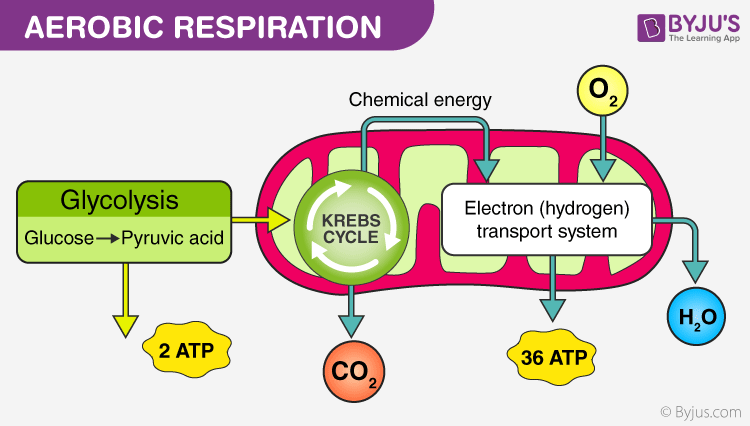
Steps Of Aerobic Respiration
The complete process of aerobic respiration in organisms occurs in four different stages, as denoted below:
- Glycolysis
- It is the primary step of aerobic respiration. Glycolysis takes place within the cytosol of the cell. The glucose molecules are split during the glycolysis process. Thereby, leading to the separation into two ATP and two NADH molecules. We require these by-products of glycolysis in the further processes of aerobic respiration.
- Formation of Acetyl Coenzyme A
- This is the second step in aerobic respiration. The mitochondria serve as a site for the oxidation of pyruvate. Therefore, cells end up producing a 2-carbon acetyl group during the glycolysis process. The newly produced 2-carbon acetyl group binds with coenzyme A. This produces acetyl coenzyme A. After glycolysis, this procedure occurs with the help of the pyruvate dehydrogenase enzyme complex.
- Citric Acid Cycle
- This is the third step in aerobic respiration. We can also call this process the Krebs cycle. Krebs discovered this stage of respiration. Therefore, his name is used to identify this cycle. During the Citric Acid Cycle, the oxaloacetate reacts in combination with the acetyl-coenzyme A and produces citric acid. The citric acid cycle undergoes a series of multiple varied reactions. This process finally produces 2 molecules of carbon dioxide, 1 molecule of ATP, and reduced forms of NADH and FADH.
- Electron Transfer Chain
- This is the last step in the process of aerobic respiration. This step of respiration produces large amounts of ATP molecules. The electron transferring complexes transfer the electrons from NADH and FADH. This creates energy in the form of ATP. A single molecule of glucose produces a total of 34 ATP molecules.
Summary Of Aerobic Respiration
A summary of Aerobic Respiration is as follows;
- Aerobic respiration is the process of usage of Oxygen to deconstruct glucose, amino acids, fatty acids to produce energy.
- The pyruvate is converted into acetyl CoA. The mitochondrial matrix has enzymes responsible for the same. Various enzymes work together to achieve this conversion.
- The Citric Acid cycle occurs twice for each glucose molecule.
- The inner mitochondrial membrane houses many electron transfer proteins. This aids in the transfer of electrons from one reacting molecule to the other. This step is known as the electron transport chain.
- ATP synthase produces ATP from ADP and inorganic phosphate.
- ATP is the energy currency in the cell. The cell machinery breaks down the ATP further to release energy. This energy is utilized by the organism to perform tasks vital to survival.
What Is Glycolysis?
Glycolysis is a series of reactions that extract energy from a single molecule of glucose by splitting it into two molecules called pyruvates. Glycolysis is an ancient metabolic pathway, which means that it evolved long ago. Henceforth, glycolysis occurs in the great majority of organisms alive today.
Glycolysis is a process that occurs first in the set of reactions for respiration. Without consideration of whether it is aerobic or anaerobic, glycolysis will occur. Glycolysis does not require Oxygen. Hence, it is common to the pathways of both aerobic and anaerobic respiration.
Read Also: Clemmensen Reduction : Explanation
Three German biochemists discovered glycolysis as a metabolic process that initiates respiration. Namely, Gustav Embden, Otto Meyerhof, and Jakub Karol Parnas. They discovered Glycolysis in the early 19th century. Henceforth, Glycolysis is also known as the EMP pathway (Embden–Meyerhof–Parnas).
Where Does Glycolysis Occur?
Glycolysis is the first reaction that initiates cellular respiration. It takes place in the cytosol of the cell. The cytosol is the matrix of the cell. Associated enzymes and factors are located in the cytosol. Glycolysis is anaerobic. And therefore does not require energy. As such, it is one of the most ancient metabolic pathways that occur even in the simplest cells, including the earliest prokaryotes.
Cytosol Structure
The cytosol is a semi-fluid matrix filling the interior of the cell. Cytosol also embeds the other organelles and subcellular compartments. The cell membrane encloses the cytosol. The membranes of different organelles also enclose it. Thereby making up a separate cellular compartment. Together, the cytosol and all organelles, excluding the nucleus, make up the cytoplasm.
Analysis of the cytosolic proteome shows enrichment of terms for various biological processes. Examples include protein modification, mRNA degradation, metabolic processes, signal transduction, and even cell death. The cytosol is the primary medium of all cellular reactions.
The cytosol makes up about 3/4th of the total volume of human cells.
The cytoplasm of cells is highly crowded and complex in structure. The cytosol mainly consists of water (approximately 70% of the volume) and proteins (20-30% of the volume). Rather than just a liquid, we often describe it as a hydrophilic jelly-like matrix.
This matrix allows for free movement of ions, proteins, water soluble molecules but also larger structures such as protein complexes and small organelles across the cell. Various ions such as potassium, sodium, bicarbonate, chloride, calcium, magnesium, and amino acids are also important constituents of the cytosol.
Cytosol Components And Functions
The differences in concentration of these ions between the cytosol and the extracellular fluid or cytoplasmic organelles are essential for many cellular functions. For example, enabling communication between cells at the nervous synapses. Human cytosolic pH ranges between 7.0 – 7.4. This means that the human cell is slightly alkaline in pH. At the same time, a growing cell is more alkaline in nature.
The cytosol also contains different non-membrane-bound structures, including cytoplasmic inclusions. Examples include glycogen-, pigment- and crystalline inclusions, and cytoplasmic bodies, such as P bodies and stress granules. Active retrograde transport of wrongly folded proteins creates large inclusion bodies called Aggresomes. Microtubules also aid in this process.
This sequestration has the function of protecting the cell. P bodies are non-membrane-bound foci of mRNA and proteins that have multiple functions. Such as RNA turnover, translational repression, RNA-mediated silencing, and RNA storage.
Rods and rings (RRs) are rare and recently discovered structures that can also appear in the cytosol of certain cells. These are filamentous structures containing proteins involved in the biosynthesis of nucleotides. They were originally discovered by the use of human autoantibodies, but little is known about their biological function.

Glycolysis Mechanism
The procedure of glycolysis is mentioned in points below;
1. A phosphate group is added to the starter glucose in the cell cytosol. This is achieved by the action of an enzyme named Hexokinase. During this step, the enzyme transfers a phosphate group from ATP to glucose forming glucose 6-phosphate.
2. Glucose 6-phosphate is isomerized into fructose 6-phosphate. Phosphoglucomutase is the enzyme that catalyzes this step of glycolysis.<
3. The other ATP molecule now transfers a phosphate group to fructose 6-phosphate. This converts it into fructose 1,6-bisphosphate. The enzyme involved in this stage of glycolysis is Phosphofructokinase.
4. The enzyme Aldolase converts fructose 1,6-bisphosphate into glyceraldehyde 3-phosphate and dihydroxyacetone phosphate. The two molecules are mutual isomers of each other. Therefore, this step of glycolysis is an isomerization reaction.
5. Triose-phosphate isomerase is the enzyme required in the next step of glycolysis. It converts dihydroxyacetone phosphate (DHAP) into glyceraldehyde 3-phosphate, which is the substrate in the successive step of glycolysis.
6. This step houses two reactions:
- The enzyme glyceraldehyde 3-phosphate dehydrogenase transfers 1 hydrogen molecule from glyceraldehyde phosphate to nicotinamide adenine dinucleotide (NAD) to form NADH + H+.
- The enzyme glyceraldehyde 3-phosphate dehydrogenase adds a phosphate to the oxidized glyceraldehyde phosphate to form 1,3-bisphosphoglycerate.
7. Phosphate is transferred from 1,3-bisphosphoglycerate to ADP to form ATP. Phosphoglycerokinase is the enzyme that helps this step of glycolysis to occur. Thus, we obtain two molecules of phosphoglycerate and ATP at the end of this stage of glycolysis.
8. The phosphate of both the phosphoglycerate molecules undergoes relocation from the third to the second carbon. This yields two molecules of 2-phosphoglycerate. The enzyme involved in this step is Phosphoglyceromutase.
9. There is the involvement of the enzyme Enolase in this stage of glycolysis. It removes a water molecule from 2-phosphoglycerate to form phosphoenolpyruvate.
10. This is the last step of glycolysis. Here, a transfer of phosphate from phosphoenolpyruvate to ADP takes place to form pyruvate and ATP. This is done by the action of pyruvate kinase. We obtain two molecules of pyruvate and ATP as the end products of this step.
